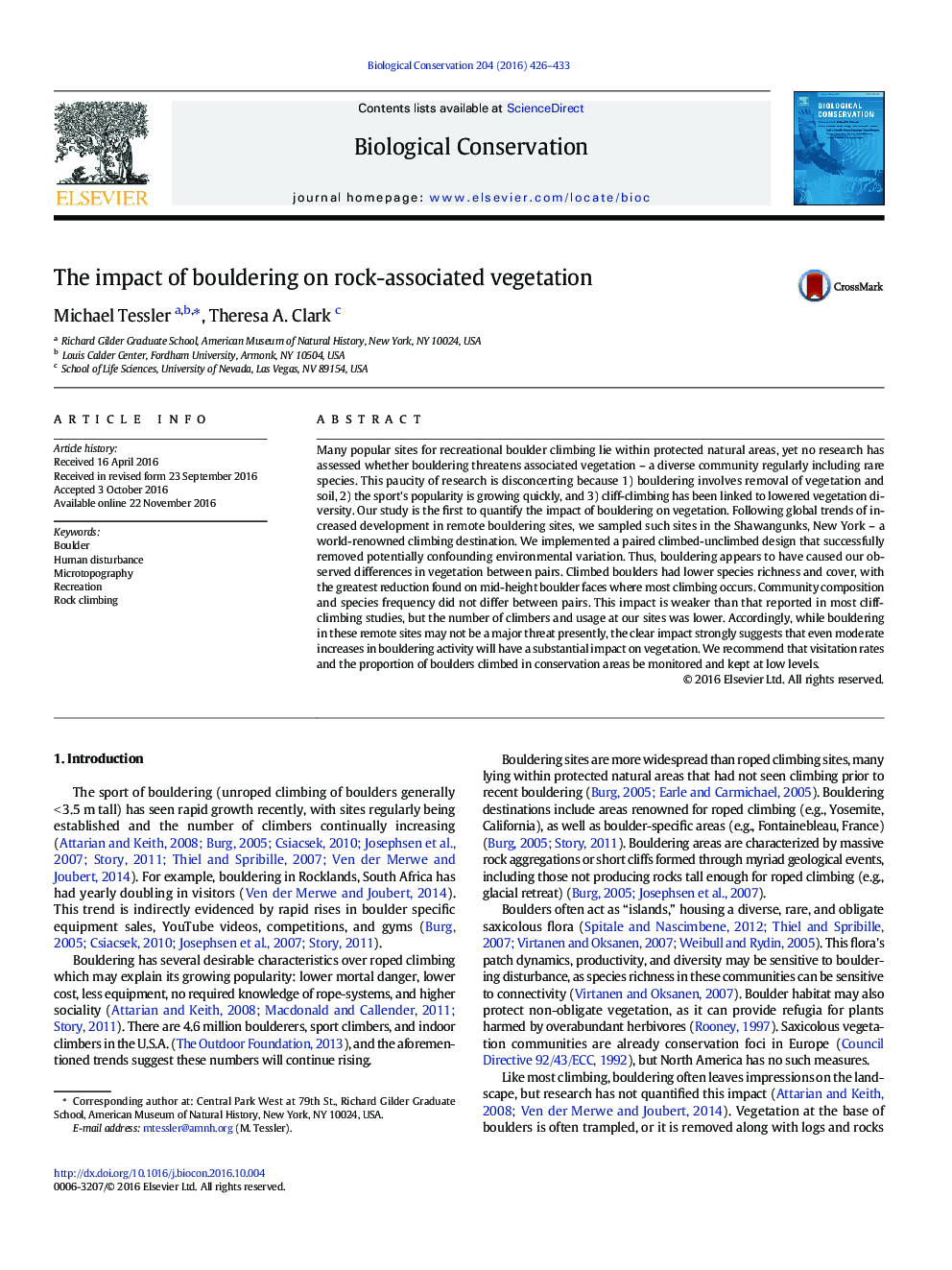| کد مقاله | کد نشریه | سال انتشار | مقاله انگلیسی | نسخه تمام متن |
|---|---|---|---|---|
| 5743420 | 1412305 | 2016 | 8 صفحه PDF | دانلود رایگان |
- First study on recreational bouldering indicates vegetation is impacted.
- Climbing impact on boulder vegetation is lower than that in cliff climbing studies.
- A paired design controlled potentially confounding environmental variables.
- This pairing may simplify future impact studies by removing complicated analyses.
- Land managers should keep bouldering frequency low to prevent significant impact.
Many popular sites for recreational boulder climbing lie within protected natural areas, yet no research has assessed whether bouldering threatens associated vegetation - a diverse community regularly including rare species. This paucity of research is disconcerting because 1) bouldering involves removal of vegetation and soil, 2) the sport's popularity is growing quickly, and 3) cliff-climbing has been linked to lowered vegetation diversity. Our study is the first to quantify the impact of bouldering on vegetation. Following global trends of increased development in remote bouldering sites, we sampled such sites in the Shawangunks, New York - a world-renowned climbing destination. We implemented a paired climbed-unclimbed design that successfully removed potentially confounding environmental variation. Thus, bouldering appears to have caused our observed differences in vegetation between pairs. Climbed boulders had lower species richness and cover, with the greatest reduction found on mid-height boulder faces where most climbing occurs. Community composition and species frequency did not differ between pairs. This impact is weaker than that reported in most cliff-climbing studies, but the number of climbers and usage at our sites was lower. Accordingly, while bouldering in these remote sites may not be a major threat presently, the clear impact strongly suggests that even moderate increases in bouldering activity will have a substantial impact on vegetation. We recommend that visitation rates and the proportion of boulders climbed in conservation areas be monitored and kept at low levels.
107
Journal: Biological Conservation - Volume 204, Part B, December 2016, Pages 426-433
